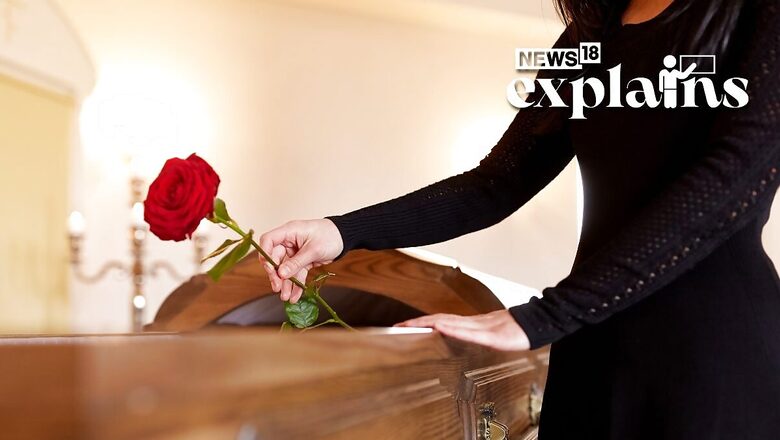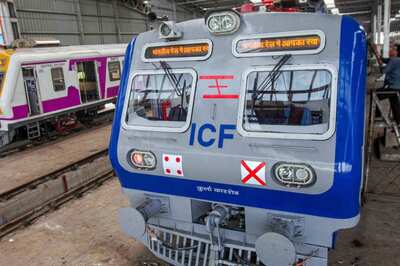
views
An elderly woman from Ecuador, who awoke inside a coffin during her own wake, has sadly passed away, according to authorities. The incident, which was captured in a viral video, shows Bella Montoya, aged 76, breathing heavily while two men assisted her. Her son, Gilbert Barbera, explained that she had been desperately banging on the inside of the casket while her relatives mourned, as she had been mistakenly declared dead on June 9, AFP reported.
Following the distressing experience at the wake, Montoya was hospitalized in Babahoyo. On Friday, she passed away due to a stroke, as reported by the regional health department. Barbera expressed his grief, stating, “This time my mother really did die,” and mentioning that his life would never be the same.
The Health Ministry has initiated an investigation into the circumstances surrounding the initial erroneous declaration of her death. Local news sources have indicated that Montoya suffered from catalepsy, a condition characterized by the loss of sensation, consciousness, and rigidity in the body.
Cases of mistaken deaths are frequent. In a recent incident reported in India in June, a man who was believed to be deceased shocked everyone by waking up on his own funeral pyre just moments before the fire was to be set. The event took place in Morena, Madhya Pradesh, where the male members of the family had gathered at the cremation ground to bid farewell to the departed soul, following religious customs. The man regained consciousness, displaying signs of life, which left the crowd confused, as they had been standing by what they presumed to be his lifeless body.
Initially, fear overwhelmed the onlookers, prompting them to distance themselves from the man who had seemingly come back to life. However, once they collected themselves, concern took over, and they immediately called for a doctor. The incident occurred at Shanti Dham in Ward No. 47 of Morena, Times of India reported. Upon being informed about the bizarre turn of events, the doctor hurriedly rushed to the cremation grounds. After examining the man’s vital signs, the doctor confirmed a heartbeat, indicating the man was still alive.
The man was referred to Gwalior for further medical treatment. As reported by FPJ, the young man was identified as Jeetu Prajapati and had been grappling with kidney problems. On Tuesday evening, he suddenly collapsed. Upon checking his pulse and respiration by placing fingers on his nose and mouth, the bystanders had concluded that he had passed away and prepared for his funeral after calling his relatives.
Fear of Premature Burial Not New
However, the fear of premature burial or cremation is not new. According to a blog by the British Library called Untold Lives, Sir George Buggin, the son of Barrington Buggin who worked for the East India Company, made an interesting request in his will. He wanted a surgeon to make cuts in the arteries of his arms and legs after he died but before he was buried.
This might seem strange to us today, but back in the 18th and 19th centuries, many people had a fear of being buried alive by mistake. They worried that they could be declared dead when they were actually just unconscious. To deal with this fear, some individuals added a special clause to their wills. They asked for a procedure to be done to make sure they were really dead before they were buried. Common requests included injecting poison or making cuts, often done by a surgeon.
Another famous person who made a similar request was the author Hans Christian Andersen, who died in 1875. He used to keep a note by his bed saying that he was “only in a state of suspended animation.” In his will, he asked that his veins be opened before he was buried if he was pronounced dead.
Safety Coffins
This fear also contributed to the production many versions of ‘safety coffins’.
According to a report from the Australian Museum, in the second half of the 19th century, more than thirty different designs for safety coffins were patented in Germany. These coffins had a special feature that allowed the supposedly “dead” person inside to communicate with people above ground. Some designs had ropes that, when pulled, would ring a church bell or a bell mounted on the coffin. Others had a flag that could be raised, a loud firecracker, or a rocket. Some even included a shovel, a ladder, and supplies of food and water. One important element, which was sometimes forgotten in the designs, was a tube for the person to breathe and occasionally receive sustenance.
In 1822, Dr. Adolf Gutsmuth demonstrated his design by being buried alive for several hours and having a meal of soup, beer, and sausages delivered through the feeding tube of his coffin.
Although several of these safety coffins were built and sold, there is no evidence that any deceased person was ever buried in one, the report says. Most of the designs had flaws that would have made them unlikely to work properly if they were actually used.
For example, some designs required ropes to be tied directly to the arms and legs of the deceased person, so that any movement would trigger an alarm. However, the natural movements of the body as it decomposes and swells would have constantly set off these alarms. Safety coffins are still available today. In 1995, an Italian inventor named Fabrizio Caselli created a model that included an emergency alarm, a microphone/speaker for communication, a torch, an oxygen tank, a heartbeat sensor, and a heart stimulator.
One notable design from 1829, created by Dr. Johann Gottfried Taberger, had a bell connected to strings attached to the hands, feet, and head of the “corpse.” The bell would alert a cemetery night watchman if it was activated. The design of the coffin prevented the bell from being triggered by wind or birds landing on it. The tube in the design also prevented rainwater from reaching the “corpse” and had mesh to keep insects away. If the bell rang, a second tube was to be inserted at the foot of the coffin, and air would be pumped through with a bellows.
How is Death Certified?
According to the World Health Organisation, certifying the death of an individual, which involves providing a written record of the diagnosis, has been a common medical practice for many years. This diagnosis is usually clear and leaves little room for doubt. However, despite advancements in scientific understanding and technology, there are still significant variations in the criteria used to determine death across different countries, WHO says. This can lead to confusion among the public and even healthcare professionals.
Defining the moment of death is crucial to prevent unnecessary medical interventions on patients who have already passed away. It is also important for transparent and ethical organ donation processes.
Death is a process that involves the cessation of physiological functions, and determining death is the final event in that process. For most people, death is confirmed when there is irreversible cessation of cardiorespiratory function.
In the latter half of the twentieth century, advancements in medical technology, such as mechanical ventilation and cardiovascular support in intensive care units, allowed for the maintenance of cardiac activity in patients with severe brain injuries who had lost brain function and spontaneous breathing. It became scientifically evident that death resulted from the irreversible loss of brain functions, either due to severe brain injury or lack of circulation.
Defining the precise moment of death can be challenging and should be based on the best available scientific evidence, WHO recommends. Over the past two decades, this medical determination has evolved alongside medical progress, the development of additional tests, and the need for prompt and accurate diagnoses. While there are various ways people may die, there is only one way to be considered dead. Therefore, the criteria for determining death should be rigorous, universally acceptable in medical practice, and respectful of cultural differences.
AFP contributed to this report




















Comments
0 comment